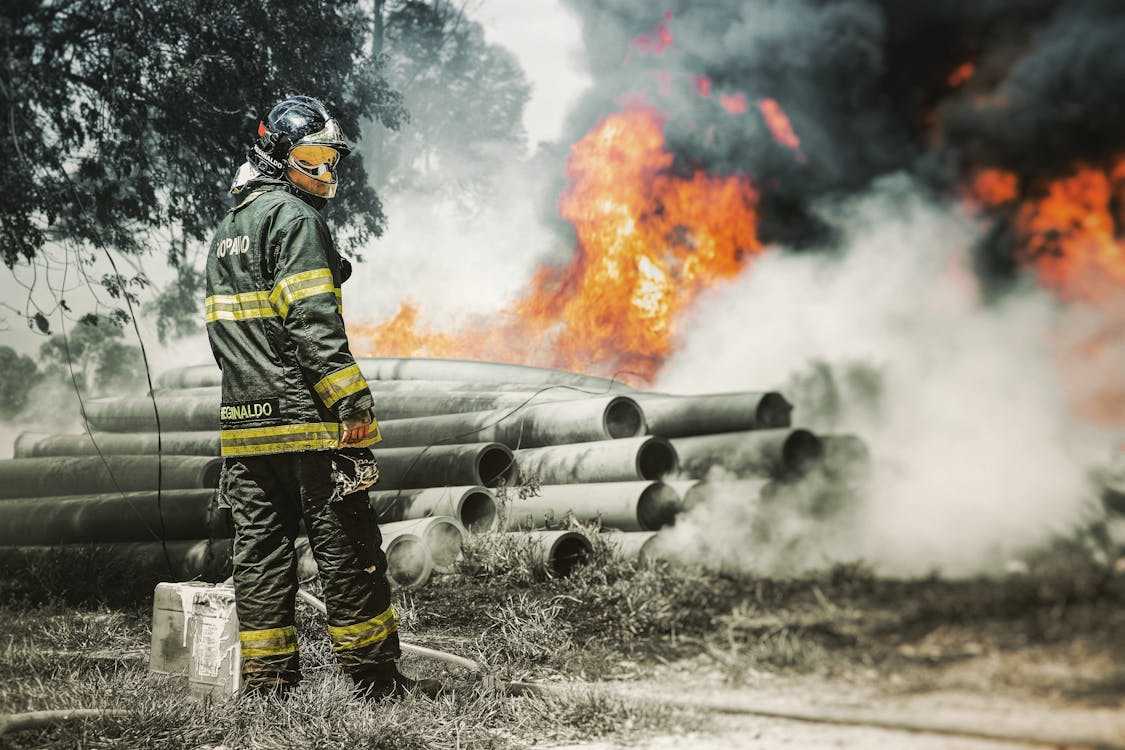A growing wave of legal action has engulfed manufacturers of aqueous film-forming foam (AFFF). Communities and individuals seek justice for the alleged health risks associated with per- and polyfluoroalkyl substances (PFAS).
AFFF, used extensively in firefighting, is now at the center of multidistrict litigation (MDL) with thousands of pending lawsuits. This legal battle sheds light on the long-known dangers of PFAS exposure and the responsibility of manufacturers and oversight bodies in safeguarding public health.
In this article, we will explore AFFF lawsuits, exposing health risks, manufacturer accountability, and settlements.
The Threat Associated With AFFF
AFFF, designed as an effective firefighting solution, has inadvertently become a silent threat to public health. The foam contains per- and polyfluoroalkyl substances (PFAS), known for their persistence in the environment and potential harm to human health.
According to the Agency for Toxic Substances and Disease Registry, long-term exposure to PFAS has been linked to various health issues. This includes cancers and immune system disruptions. Despite manufacturers’ awareness of these risks, there is evidence suggesting a lack of sufficient warnings to individuals, exposing them unknowingly to potential harm.
The silent threat of AFFF underscores the importance of stringent oversight and transparency in the development and use of firefighting foams.
AFFF Manufacturers Under Scrutiny
Major AFFF manufacturers, including industry giants like 3M, DuPont, and Kidde-Fenwal, are facing intense scrutiny in the legal arena. Plaintiffs argue that these manufacturers had knowledge of the health risks associated with PFAS since the 1970s and failed to adequately inform the public.
The lawsuits emphasize the responsibility of these corporations to ensure the safety of their products, revealing a pressing need for accountability within the industry. The spotlight on AFFF manufacturers encourages a reevaluation of corporate responsibility in the production of potentially hazardous substances.
The Role of NFPA
According to ConsumerNotice.org, the National Fire Protection Association (NFPA) finds itself entangled in AFFF lawsuits due to its influence on industry standards. Plaintiffs allege that the NFPA’s testing standards indirectly mandated the inclusion of PFAS in firefighting equipment, potentially contributing to the widespread contamination.
This brings into question the unintended consequences of regulatory standards, highlighting the need for comprehensive reviews to prevent inadvertent public health threats. The inclusion of NFPA in the legal discourse prompts a critical examination of industry guidelines and their impact on public safety.
Health Risks and AFFF Exposure
Individuals exposed to AFFF, particularly firefighters, military personnel, and communities near firefighting facilities, face increased health risks. These risks span a spectrum, including the development of various cancers, immune system damage, and other serious health complications.
The lawsuits underscore the urgency in addressing the potential harm caused by AFFF exposure and the need for comprehensive solutions to safeguard public health. The range of health risks associated with AFFF exposure emphasizes the urgency of implementing preventive measures and raising awareness within vulnerable communities.
The Complex Landscape of AFFF Lawsuits
According to TruLaw, the AFFF lawsuits create a complex legal landscape, marked by multidistrict litigation and numerous individual cases. The sheer volume of lawsuits underscores the widespread impact of AFFF, affecting communities, individuals, and water supply companies.
The complexity arises from the diverse range of claims and the need for a unified approach to address the issues surrounding AFFF contamination. The intricate legal landscape necessitates a collaborative effort among legal professionals, regulatory bodies, and affected communities to streamline the resolution process.
Settlements in AFFF Lawsuits
In response to the mounting legal pressure, manufacturers such as 3M have proposed significant settlements to resolve AFFF-related litigation. While these offers aim to provide compensation and closure, the acceptance remains uncertain, as some parties may opt to continue pursuing individual lawsuits.
CBS News reports that last year, 3M, a prominent AFFF manufacturer, offered a $10.3 billion settlement in an attempt to dissolve the litigation. This substantial sum aimed to address the mounting claims and compensate those affected by the alleged health risks associated with AFFF exposure.
While AFFF lawsuit settlement amounts of this magnitude are unprecedented, their acceptance remains uncertain. This leaves room for individual lawsuits to persist and legal battles to continue.
Notably, the tentative $10.3 billion deal with multiple U.S. cities and towns over contamination claims has yet to be finalized. This underscores the complexity and challenges of reaching comprehensive resolutions in the face of extensive litigation.
The dynamic nature of AFFF lawsuit settlements prompts a critical examination of their efficacy in addressing the complexities surrounding PFAS contamination. Settlement offers offer a route to resolution, but possible rejections highlight the challenges in balancing compensation with the quest for justice in AFFF lawsuits.
Eligibility and the Road Ahead
Eligibility for AFFF lawsuits extends to individuals who have been exposed to the foam, including firefighters, military personnel, and residents near AFFF-use facilities. Navigating the road ahead involves seeking legal assistance from experienced professionals specializing in personal injury cases.
These lawyers play a crucial role in assessing eligibility, collecting essential documentation, and guiding individuals through the complex legal process. They make sure that their clients’ voices are heard in the pursuit of justice. Understanding eligibility criteria and seeking professional guidance is paramount for those seeking justice in the aftermath of AFFF exposure.
FAQs
What are the symptoms of AFFF exposure?
Exposure to AFFF can cause skin irritation, respiratory issues, nausea, vomiting, and headache. Long-term exposure may lead to liver damage, thyroid dysfunction, and reproductive issues. Immediate medical attention is necessary if symptoms occur after AFFF exposure.
When was AFFF used in the Navy?
AFFF has been used by the Navy since the 1960s. It became a standard firefighting agent due to its effectiveness in suppressing liquid fuel fires, particularly those involving jet fuel on naval vessels.
Is AFFF foam fluorine free?
No, AFFF typically contains fluorine-based compounds, such as perfluoroalkyl and polyfluoroalkyl substances (PFAS), which are effective in suppressing fires involving flammable liquids. However, efforts are being made to develop fluorine-free alternatives due to environmental and health concerns.
In conclusion, the wave of AFFF lawsuits underscores the urgent need for accountability, transparency, and preventive measures in safeguarding public health from PFAS contamination. The legal battles highlight the complexities of resolving widespread litigation and the importance of collaborative efforts among stakeholders.
Settlement offers provide avenues for compensation but also raise questions about the balance between justice and closure. Moving forward, comprehensive solutions must be pursued to address the multifaceted challenges posed by AFFF exposure.
It’s critical to heed the lessons learned from these legal proceedings and enact measures that prioritize the well-being of communities. This ensures a safer and healthier future for all.






